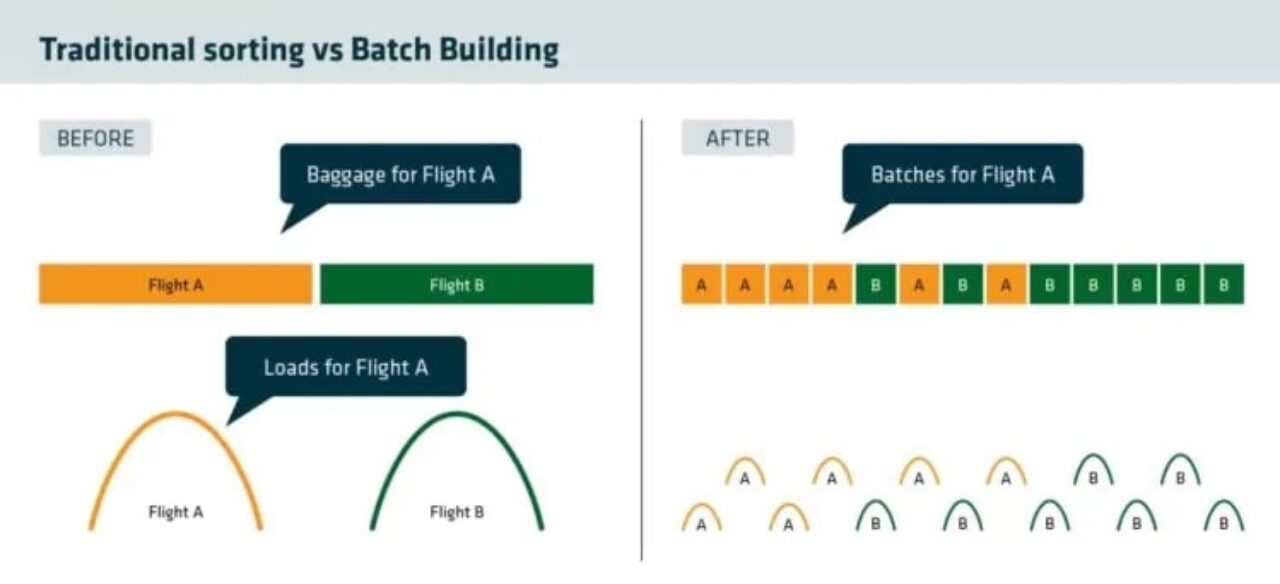The great advantage of using high-bay racking is that it has the same storage capacity as the traditional storage lanes or loops but occupies substantially less space.
For example, a flexible racking system with the capacity to hold 800 bags will use just 730m2, while a conventional storage lane system holding the same 800 bags will inhabit 1200m2. Rack-based stores can save up to 50 percent in valuable footprint and provide room for larger storage to hold more bags.
When racking systems are combined with the practice of batch building, EBS systems can be transformed into multi-bag stores. So, more than being just early-bag storage, EBS systems can be fully multi-purposed into dynamic storage systems for empty totes, goods for the retail area and on-demand storage. It also provides passengers with check-in flexibility, offering greater personal choice and convenience.
Semi-automating the loading of bags
The automated loading of bags into ULDs or dollies also helps to optimise the baggage make-up process. Semi-automated loading devices facilitate speed loading baggage with high efficiency and improved ergonomics.
A semi-automated loading device enables a single operator to control an entire flow or batch of bags with a simple joystick while loading them into a dolly or container. These devices make shorter loading windows possible, allowing baggage operators to handle a higher number of items. They also reduce the risk of injury to operators caused by repetitive or heavy lifting.
As there is less manual handling needed when deploying semi-automated devices, the airport can increase its overall security and reduce its risk of damage to baggage items.
Takeaway
Creating greater efficiencies in baggage handling is not confined to the sortation part of the process. System optimisation can also be made downstream at the storage and make-up areas with new approaches and technologies. Automation, together with the introduction of practices such as batch-building and rack-based dynamic storage, can deliver more streamlined and productive make-up areas that operate on a very effective pull process.






